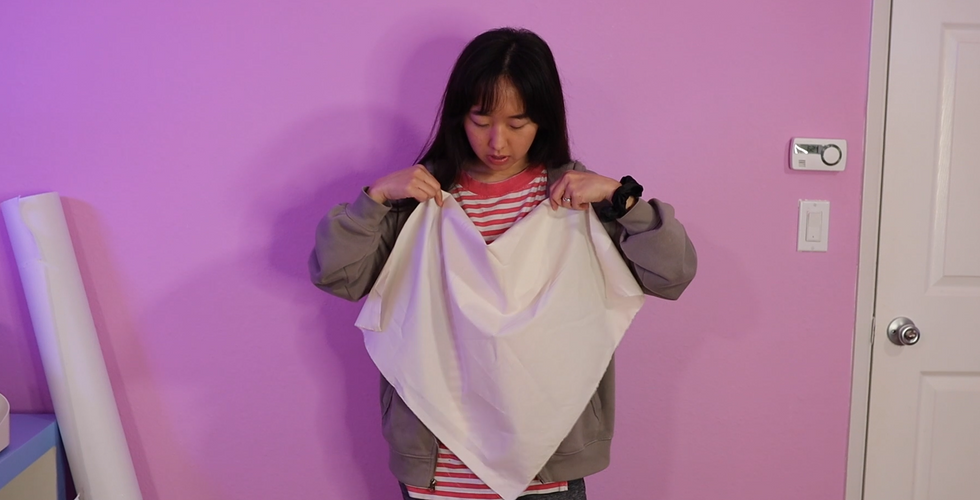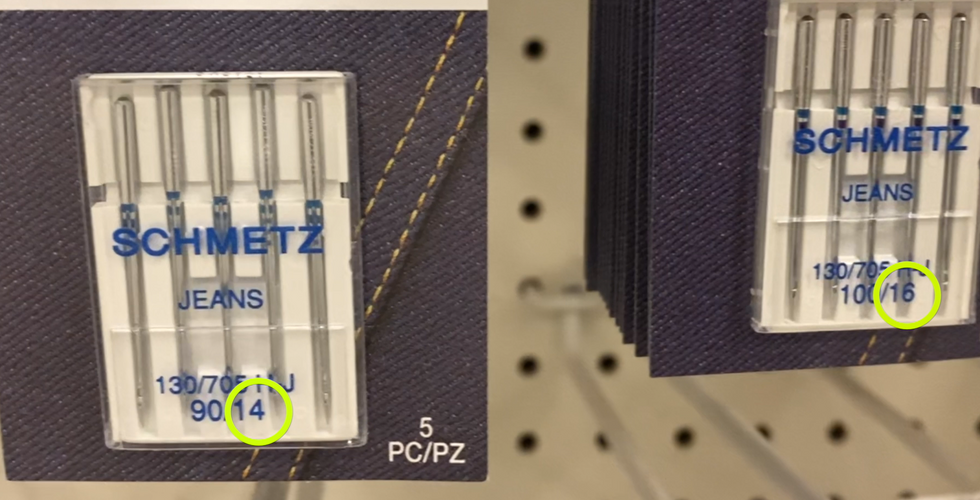10 Common Sewing Errors Made by Beginners and How to Fix Them
- managementcoolirpa
- Mar 24, 2022
- 5 min read
Updated: May 3, 2023

Video link: 10 Sewing Mistakes Beginners Make
Mistake #1 Not Cutting Your Pattern Out On Grain

On woven fabric, there is the warp which is the lengthwise grain which is parallel to the selvage edge of the fabric. And the Weft which is the crosswise grain, normally has more stretch. The Bias runs diagonally across the fabric, has the most stretch and best drape. Depending on what you’re making, the direction of grain line will vary. For most projects, I line up my pattern parallel to the selvage. But if I’m creating something that needs nicer draping or more stretch, I’ll cut it on the bias. If you’re using a commercial pattern it will tell you what direction to lay the pattern on your fabric. And If you draped and created your own pattern, you should be paying attention to where your grain line is so you can mark it on your pattern.
Depending on what you’re making, the direction of grain line will vary. For most projects, I line up my pattern parallel to the selvage. But if I’m creating something that needs nicer draping or more stretch, I’ll cut it on the bias. If you’re using a commercial pattern it will tell you what direction to lay the pattern on your fabric. And If you draped and created your own pattern, you should be paying attention to where your grain line is so you can mark it on your pattern.
For example Here's a pattern I drafted and since the center front is cut on fold, the fold line is my grainline. The next pattern piece is not on fold and I marked a long arrow on my pattern indicating the grain line. You want to line the arrow with the selvage edge, and use a ruler to make sure its parallel all the way down. It’s also important to make sure your fabric is on grain, you can tell if your fabric is on grain if you fold your fabric and the corners all match. If the corners are not lined up, you’ll have to stretch and pull the fabric so its back on grain first. Now all the edges are lined up.
Mistake #2 Not Pressing your Seams

Pressing your project before sewing the next step will help your seams lay more flat, it can allow for more accurate sewing, and overall it will make your project look cleaner and more professional even if you’re sewing isn’t perfect. I also learned that pressing your seams allow the thread to meld into the fabric which will make the seam stronger and appear more finished. Overall pressing is extremely important in sewing and a lot of us don’t do it enough so I hope to show more of my iron in future tutorials!

Mistake #3 Forgetting To Add Seam Allowance

Forgetting to add seam allowance so the garment ends up too small. So if this is the shirt I want to sew, the seam line when I’m wearing it is here, but if I don’t add seam allowance and just trace it as is, my seam line will actually move in more and and I’ll be sewing it here, which will make it too small and tight to wear. So if you want it to fit you like this, you need to add seam allowance to all sides so the end result will fit correctly. I normally add a half inch seam allowance when making clothes for myself, but you can make yours bigger so there's room for adjustment, and especially if you’re making something for someone else you’ll want a bigger seam allowance.
Mistake #4 Not Changing Your Sewing Needle

I think the problem is also not knowing what fabric type you’re working with, so if you’re ever unsure, a simple google search can help you figure it out. Something I find super useful is this book called Textilepedia, it has high quality images of all sorts of fabric along with the name and description of them. I’ll link it below along with a 10% off code in case anyone's interested. 10% off Textilpedia. Anyway, you definitely want to change your needle when working with different fabric. For a long time I thought my machine had problems, but turns out I just had to switch my needle to the proper one. If you’re sewing with stretch fabric and knits, you should use a jersey or ballpoint needle. This needle will prevent holes in your stretch fabric especially when you make a mistake and have to seam rip. And if you’re sewing thicker material like denim, you can find specific needles labeled for denim or leather easily or search up the proper size needle for the thickness. For regular jean thickness, a size 90/14 would work but if your denim is super thick you might have to use a 100/16 size needle. If I'm working with very fine fabric like silk, I switch my needle to a microtex needle to prevent skipped stitches. Here's an example of a skipped stitch because I wasn't using the correct needle.
Mistake #5 Choosing The Wrong Fabric For Your Project

Using Textilepedia would you help if you struggle with this. For me, I kind of just get a feel for the fabric and drape it on my body to see what it would look good as. Something you can do is study the style of clothes you want to make and see if you have something similar at home. You can take that item with you when you go fabric shopping and try to find something similar in texture and weight. Some fabric stores like Joann also categorizes their fabric so you know its tops or bottoms, or meant for coats, or loungewear.
Mistake #6 Sewing Stretch Fabric With A Straight Stitch

This was a mistake I made myself as a beginner. As beginners we are always more drawn toward stretch fabric because it seems easier to sew and you won’t have to add a zipper, but once you try it on, the seam doesn’t stretch with the fabric and ends up popping open. To fix this problem, you should sew with a stretch stitch aka lightning stitch. It looks like a very narrow zigzag stitch that is slanted so it looks like you sewed a straight line. But if your machine doesn’t have a stretch stitch a zigzag stitch will work as well! and even better, you can invest in a serger once you get more serious about sewing.
Mistake #7 Not Pinning And Notching Your Fabric

Sometimes you really don’t need to pin your fabric together, but when working with stretchy or slippery fabric, pinning your pieces together will keep your seams from moving out of place. I like to make sure to at least pin the ends, and the middle. This way you know that your pieces are lined up and everything fits in between.
Mistake #8 Forcing The Fabric Through The Machine

When learning how to sew, we think that we have to help move the fabric along, but there are feed dogs on the machine that will move it for you. All you have to do is guide the fabric and make sure you’re sewing straight.
Mistake #9 Not Double Checking Your Work

As the saying goes, measure twice cut once. As easy as experienced sewers make sewing look, theres a lot of checking and double checking that goes on that makes the process super tedious but in the end it will save you lots of time and headaches!

Mistake #10 Forgetting To Back Stitch

This one seems obvious, but when I asked on Instagram what beginner mistakes my followers made, so many people said forgetting to backstitch. I know this is true because my sister was learning to sew at my house and would always forget to backstitch. So for any beginner sewers out there, you want to backstitch at the beginning of your sewing, and at the end. This will ensure that your seam won’t come undone. If you’re just sewing something temporarily with a basting stitch, or if you’re gathering fabric you don’t have to backstitch, but if you’re sewing a permanent seam, always make sure to backstitch!

































Commenti